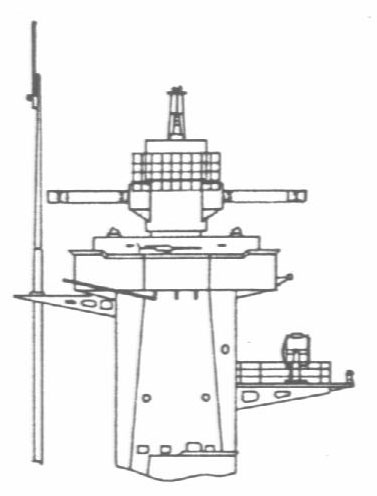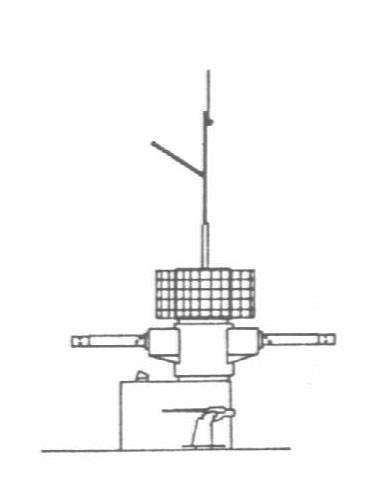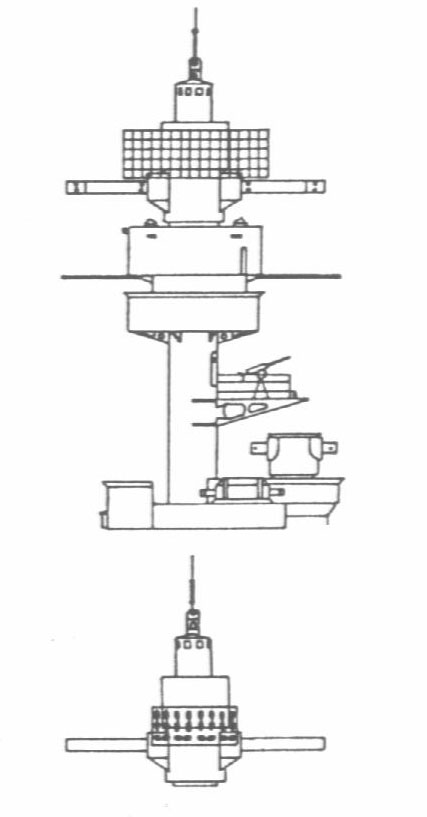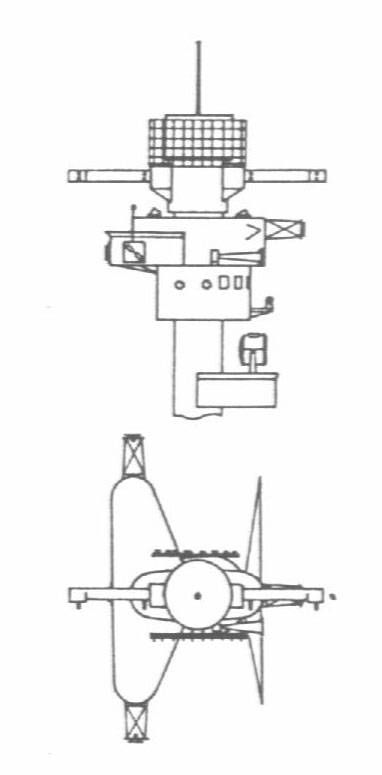4. Armored ShipsDeutschland/Luetzow Class BB/CA |
||||
| Both Admiral Graf Spee and Deutschland
have been claimed to be the first German naval vessels to be fitted with
radar. Trenckle says that Admiral Graf Spee had an experimental
FuMO 22, and Prager that Deutschland had a Seetakt set in
the autumn 1937 (which proved very useful for night navigation in Spanish
waters). Photographic analysis shows that the frame of this first experimental
set was slightly smaller (0.8m x 1.8m) than the final FuMO 22 frame, but
it is not known if there were fewer dipoles or alternatively if the dipoles
were placed closer together.
R V Jones, in his memories (Most Secret War, Hamish Hamilton, 1978) describes how the British Admirality sent L H Bainbridge-Bell to the River Plate to examine the radar installation aboard the wreck of the Graf Spee. According to Price (Instruments of Darkness, Kimber, 1967) the resultant report took one and a half years to pass through the official channels, a statement I find hard to believe considering that Bainbridge-Bell had been sent half around the world to abtain the information. It adds yet another intriguing possibility of further information, as this report, possibly including photos of Graf Spee's installation, may yet come to light. The Deutschland (renamed Lützow in 1940) had a 2m x 6m mattress antenna for a FuMO 22 throughout her wartime career. From January 1942 until March 1944 she also had a Timor frame at the rear of her radar tower, as in the Scharnhorst. To follow German practice there should also have been fixed Sumatra antennas but they cannot be traced in photographs. It is noteworthy that the foretop radar of the armoured ships (later reclassified as heavy cruisers) were provided with the best positioning of any German heavy units. It was situated at the highest point in the ship, and the foremast was removed, and replaced by a short pole mast, to provide completely unobstructed all-around coverage. Admiral Scheer was similarly equipped
before the removal of the top-heavy pyramidal armoured mast. After that
she had a 2m x 4m FuMO 27 mattress antenna and a Timor frame, bearing
in opposite directions, on the forward rangefinder tower. Three of the
four fixed Sumatra antennas, spaced 90° apart, were fitted on
small horizontal lattice constructions. Scheer also had a FuMO 27
antenna on the aft rangefinder tower.
|
||||
|



